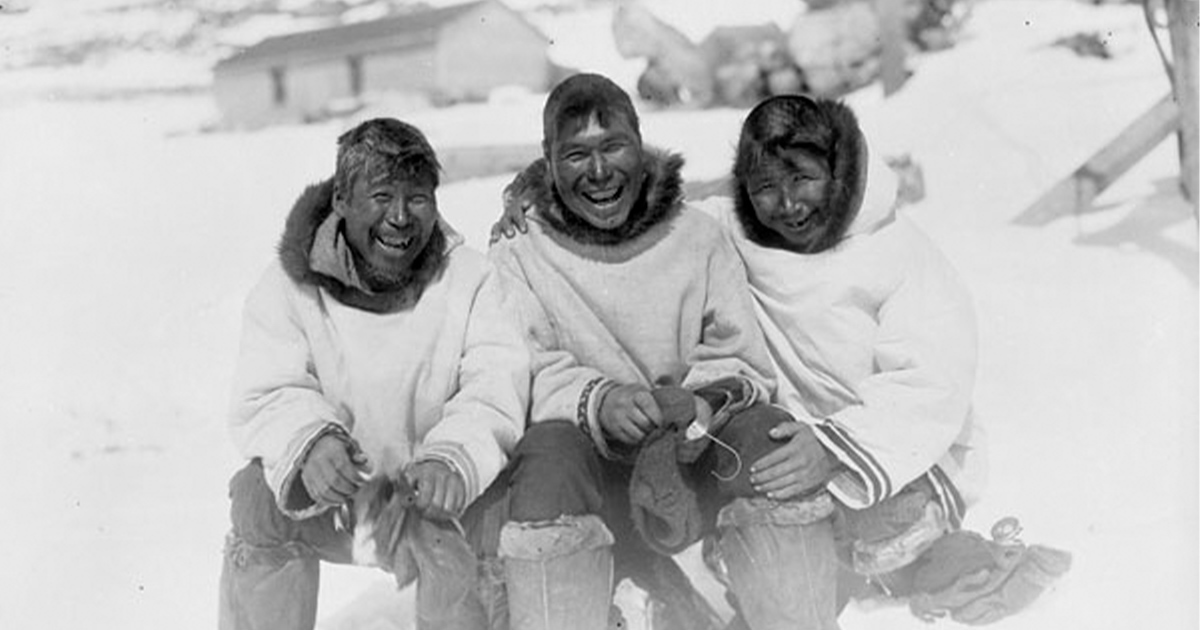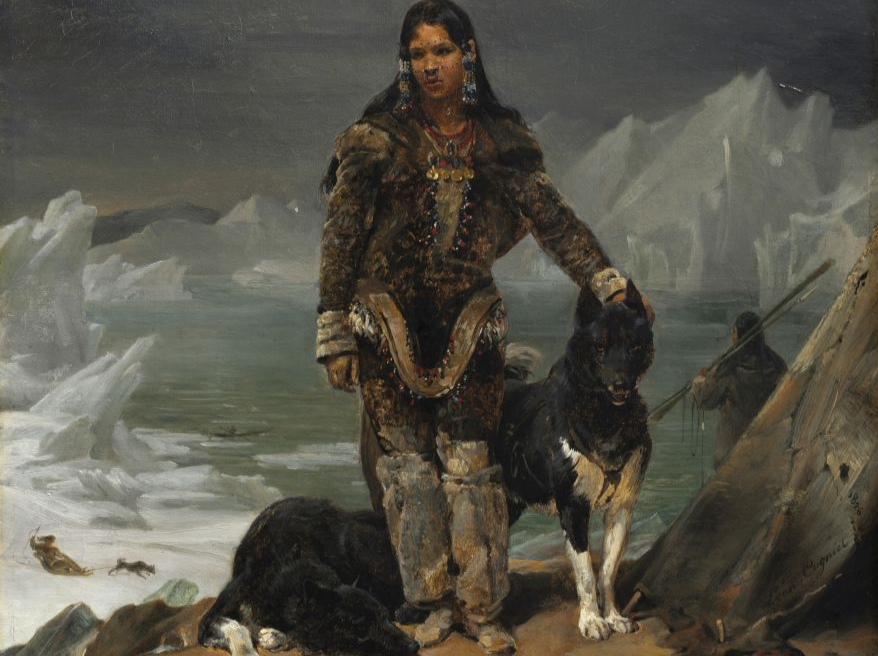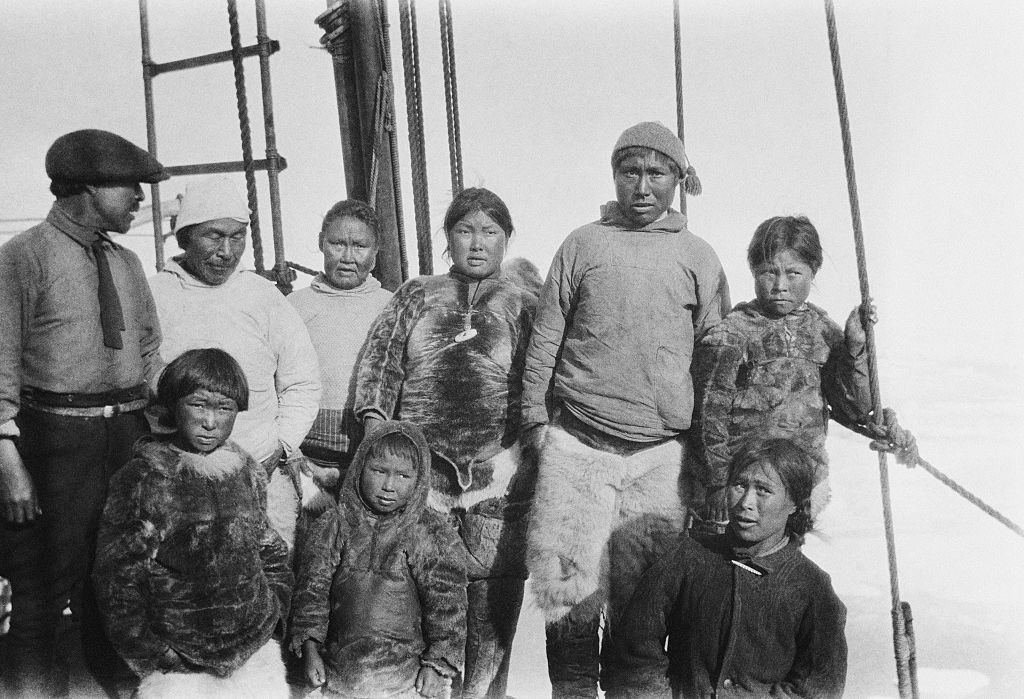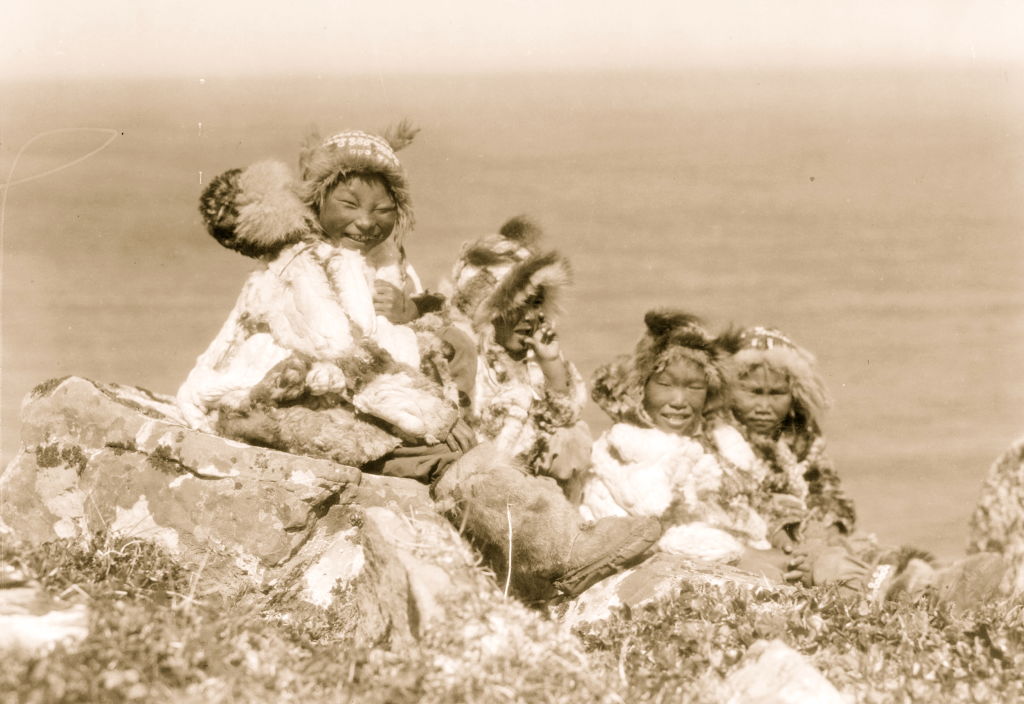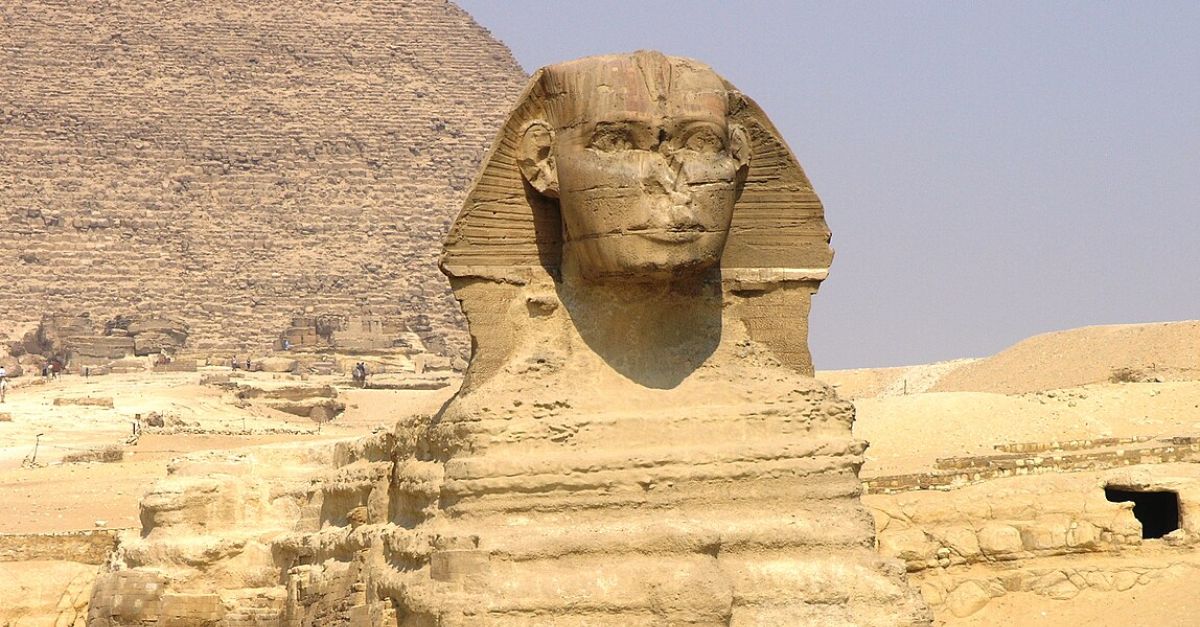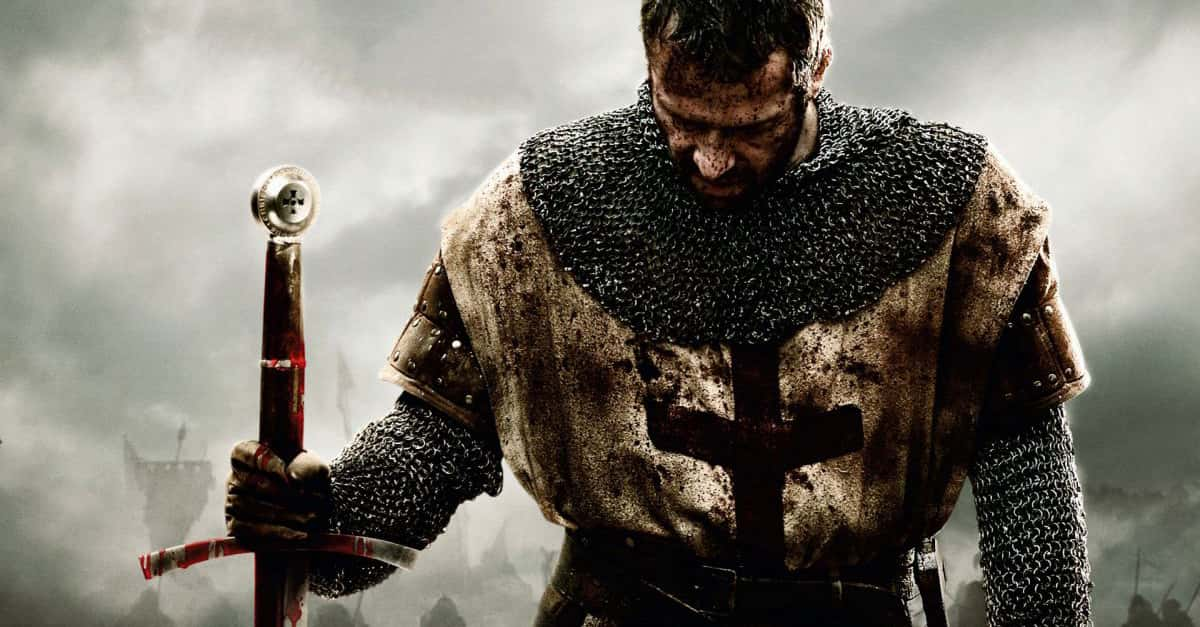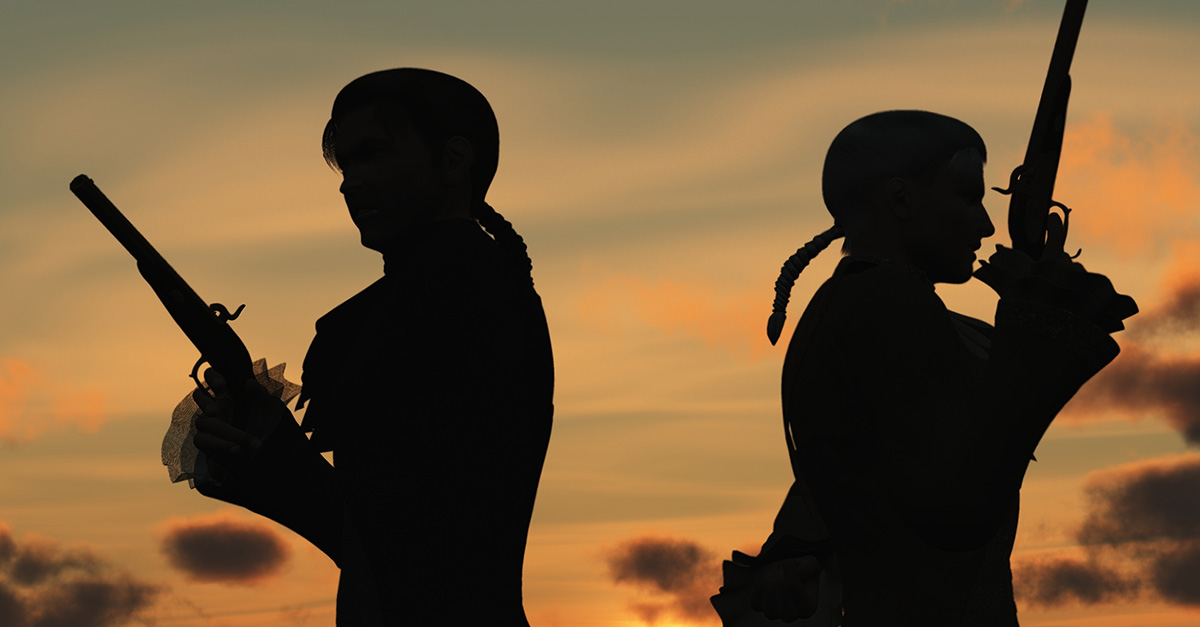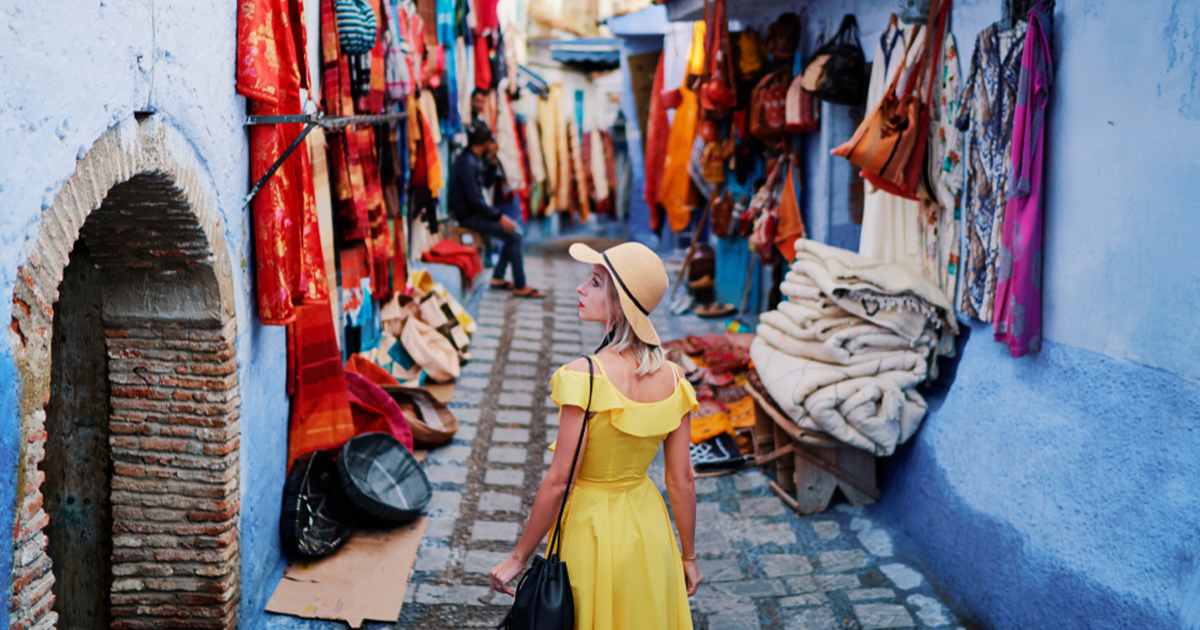The Story Of “The People”
Humans are masters at adaptation and survival—and few cultures prove that as clearly as the Inuit. Theirs is one of the greatest stories of survival, not just against the hardships of the life in the northernmost reaches of our planet but also against the tides of colonization and assimilation.
Join us as we discover the untold history of "The People".
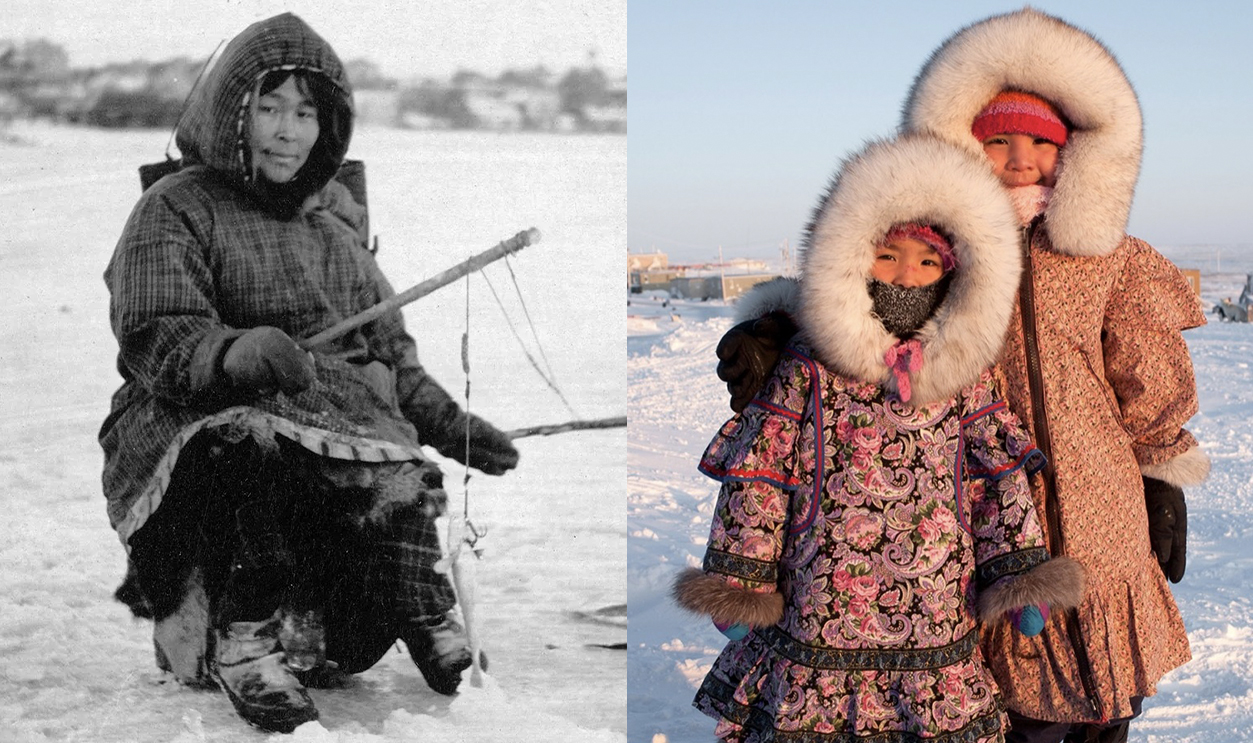
Where Do The Live?
The Inuit live in some of the coldest regions on Earth. Most are in arctic Canada, but they also live in Greenland, the US state of Alaska, Denmark, and Russia. In total, their population is estimated to be about 180,000 people.
 Nationalmuseet - National Museum of Denmark, Flickr
Nationalmuseet - National Museum of Denmark, Flickr
Their Name
Inuit means “the people” in Inuktitut. An Inuit person is called an “Inuk”. This is the commonly accepted name, but Inuit do have unique names to separate the different regions.
In Greenland, they are called Kalaallit (meaning “West Greenlanders”), Inugguit (meaning “from Thule district”), and Iit (meaning from”East Greenlanders”). In Canada, they are called Inuvialuit, Inuinnaat, and Inuit.
 Frits Johansen, CC BY-SA 4.0, Wikimedia Commons
Frits Johansen, CC BY-SA 4.0, Wikimedia Commons
Their Name (cont’d)
In Northern Alaska, Inuit call themselves Inupiat, while in southwestern Alaska, they use the names Yupiit and Cupiit. They are also referred to as Yupik, Yupiget, and Sugpiat in Russia.
The Inuit Homeland
In Canada, the Inuit homeland is called “Inuit Nunangat,” which means "the place where Inuit live”. There are four areas of the country that make up Inuit Nunangat: Nunavut, the Northwest Territories and Yukon (called “Inuvialuit”), Northern Quebec (called “Nunavik”), and Labrador (called “Inuvialuit”).
Their Language
The Inuit language is called Inuktut. While it is spoken throughout Inuit Nunangat, each area has their own unique dialect. Inuktut can be written with the English alphabet or with syllabics, where symbols represent sounds instead of letters.
 BiblioArchives / LibraryArchives, Flickr
BiblioArchives / LibraryArchives, Flickr
Inuit Origins
According to anthropologists, Inuit are the descendants of the Thule people, and group that first appears on the historical records around 1000 CE. The Thule spread across the Arctic, reaching Canada, and then Greenland by 1100 CE.
 J.J. O'Neill, CC BY-SA 4.0, Wikimedia Commons
J.J. O'Neill, CC BY-SA 4.0, Wikimedia Commons
First Encounters
The Vikings were the first Europeans that the Inuit encountered. Skraeling Island, an archeological site in Nunavut, led to the discovery of dozens of Norse items and artwork, suggesting a prosperous system of trade between Inuit and Vikings.
 BiblioArchives / LibraryArchives, Flickr
BiblioArchives / LibraryArchives, Flickr
The Fishermen Come To Town
Around the mid-16th, the Inuit encountered European fishermen and whalers, who built whaling stations along the coast of Labrador. The Inuit didn’t interrupt their business operations, but wintertime raids for tools and iron items soon became a problem for the whaling stations.
 Albert Peter Low, CC BY-SA 4.0, Wikimedia Commons
Albert Peter Low, CC BY-SA 4.0, Wikimedia Commons
A Peaceful Solution
With the help of missionaries from the Moravian Church, the whalers were able to put an end to Inuit raids. The missionaries gave iron and tools to the Inuit, ending the need to steal.
 BiblioArchives / LibraryArchives, Flickr
BiblioArchives / LibraryArchives, Flickr
Trading Partners
Throughout the 19th century, Inuit were valuable trading partners to the European explorers and fishermen, and even worked with the famous Hudson’s Bay Company. However, while they enjoyed a peaceful relationship with these newcomers, the arrival of the Europeans would still prove deadly to Inuit communities.
 UniversalImagesGroup, Getty Images
UniversalImagesGroup, Getty Images
An Invisible Enemy
Along with trade goods, the Europeans brought new diseases to the Inuit. With no immunity to illnesses like smallpox and tuberculosis, Inuit communities were devastated by high mortality rates.
 National Film Board of Canada (NFB), The Eskimo: Fight for Life (1970)
National Film Board of Canada (NFB), The Eskimo: Fight for Life (1970)
The Government Wanted Their Lands
For a while, since Inuit lands were so cold and inhospitable, they were of no interest to the Canadian government. But once the government had settled the rest of the country, they turned their eye toward the north.
In 1939, the Supreme Court of Canada ruled that Inuit, like all other Indigenous groups, were under the jurisdiction of the Canadian government.
 National Film Board of Canada (NFB), The Eskimo: Fight for Life (1970)
National Film Board of Canada (NFB), The Eskimo: Fight for Life (1970)
The End Of Tradition
In the ensuing years, the Inuit saw many of their traditions criminalized and snuffed out as the RCMP was sent to enforce Canadian law and assimilate Inuit communities. With rituals like Siqqitiq, that blended shamanism and Christianity, many Inuit were converted to Christianity.
 National Film Board of Canada (NFB), The Eskimo: Fight for Life (1970)
National Film Board of Canada (NFB), The Eskimo: Fight for Life (1970)
What Do They Eat?
Inuit are very skilled hunters and fisherman. To survive in the Arctic, they rely on a diet that is high in protein and fat. They get most of those nutrients from fish, whales, seal, caribou, and muskoxen.
 National Film Board of Canada (NFB), The Eskimo: Fight for Life (1970)
National Film Board of Canada (NFB), The Eskimo: Fight for Life (1970)
What Do They Eat? (cont'd)
Growing plants is next to impossible in the Arctic, so Inuit have traditionally foraged for greens and vegetables like tubers, roots, berries, grasses, and seaweed.
In today’s Inuit communities, fruits, vegetables, and milk can be imported, but because the food has to be transported across long distances, it is often very expensive, of limited availability, and not as fresh as the food most of get from the supermarket.
 National Film Board of Canada (NFB), The Eskimo: Fight for Life (1970)
National Film Board of Canada (NFB), The Eskimo: Fight for Life (1970)
Troubling Statistics
According to studies, while the traditional Inuit diet contains very little plant matter, they’re still able to get adequate nutrients, like vitamin C from a raw meat diet. However, despite these findings, the lifespan of modern Inuit is 12 to 15 years shorter than the average Canadian.
While some think this has to do with the Inuit’s traditional diet, a lack of access to medical services is probably a large factor in this statistic.
 Universal History Archive, Getty Images
Universal History Archive, Getty Images
Inuit Tattoos
Facial tattoos, called kakiniit, are an ancient tradition among Inuit women. For nearly 4,000 years, women have used these tattoos to signify important aspects of their community like who their family was, where they were from, things they achieved in life, and their status in the community.
 Henry Busse, Wikimedia Commons
Henry Busse, Wikimedia Commons
Inuit Tattoos (cont'd)
Traditionally, the tattoo needles for kakiniit were made out of caribou sinew that was tightly spun into a thin thread. The thread was then dipped in suet, and used to make a tattoo via a process called skin-stitching, where the ink soaked thread is poked under the skin.
Once tattoo was done, it was sterilized with a mixture of soot and urine. Nowadays, however, many people opt for a modern tattoo machine or the stick-and-poke method.
A Forbidden Art
When Catholic missionaries encountered the Inuit in the early 20th century, they forbade the women from tattooing their faces. Fortunately, modern Inuit have reclaimed the practice, and it is seeing a resurgence in popularity.
Honoring Sedna
More than just being a beautiful art, Inuit facial tattoos are also connected to Inuit legends and spiritual beliefs. Many kakiniit designs make reference to the sea goddess Sedna, and it’s said that wearing the kakiniit guaranteed a woman could go to a happy place in the afterlife.
Sedna would not allow women to enter the afterlife without the tattoos, and some unfortunate souls were even sent to the “land of the crestfallen” where they had to endure an eternity with their head hung down and smoke puffing out of their throat.
Sedna’s Tale
Sedna’s punishment for women without facial tattoos is harsh but that’s probably because Sedna is a vengeful deity—and rightfully so, considering how tragic her story is.
There are many versions of Sedna’s sad tale, but in each version, after some dispute or disaster, Sedna’s father takes her out to sea in his kayak and throws her overboard. Sedna clung to the kayak but her father chopped off her fingers, sending her sinking to the watery depths.
Sedna’s Tale (cont’d)
At the bottom of the ocean, Sedna transformed into a sea goddess. Her severed fingers became the seal, whales, and walruses that the Inuit would come to rely on.
To avoid Sedna’s wrath, it was customary for Inuit hunters to pray for her good fortune and release animals from the depths for them to catch. In Killiniq, Nunavut, people would make offerings to Sedna by throwing old harpoon heads, broken knives, and bits of meat and bone into the ocean.
 Science & Society Picture Library, Getty images
Science & Society Picture Library, Getty images
Kayaks
Traditionally, Inuit hunted sea animals from single-passenger boats called qajaq—we know them as kayaks. Inuit kayaks were covered in seal skin and impressed Europeans with their incredible buoyancy and ability to be righted while still in the seat, even the boat was completely upside down. atlas.cieq.ca, Wikimedia Commons
atlas.cieq.ca, Wikimedia Commons
The Women’s Boats
The umiaq, or “woman’s boat”, was another important seacraft for the Inuit. These boats were large, stretching about six to 12 meters long, and were made to transport people, dogs, and goods.
 Michelle Holihan, Shutterstock
Michelle Holihan, Shutterstock
Inuit Hunting
In the winter, the Inuit hunted sea animals by watching breathing holes in the ice. They would have to patiently wait for seals or walruses to come up for air. Polar bears also use this hunting technique.
Inuit Hunting (cont'd)
When it came to hunting seals and whales, harpoons were the Inuit’s choice of weapon. They could use the harpoons from their kayaks or while ice fishing.
Dog Sleds
Dog sleds, called qamutik, were an important form of transportation for the Inuit. Sleds were made of wood, animal bones, and whale baleen. With a team of dogs, the sleds could be hauled over long treks of land and sea ice.
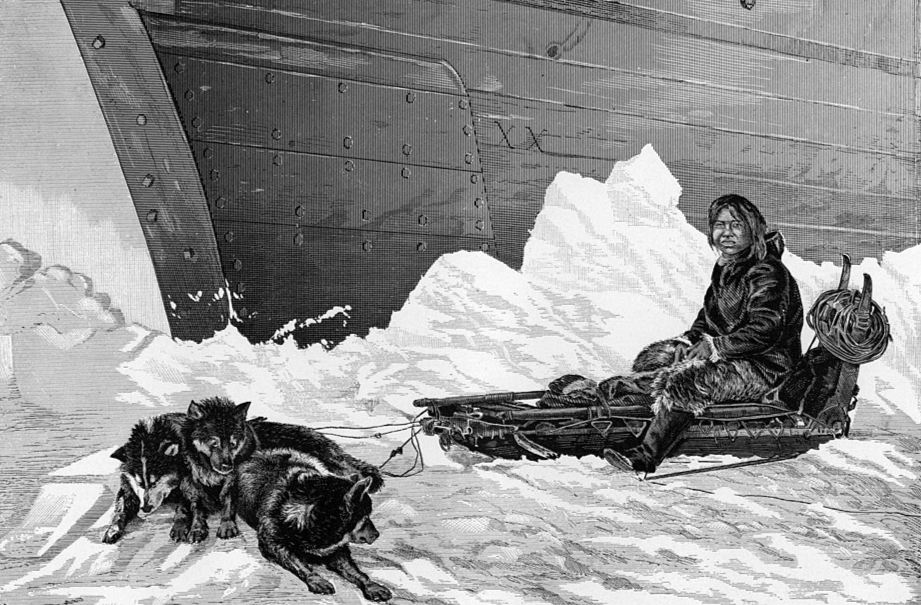 Adolphus Greely, Carlheim-Gyllenskiöld, Wikimedia Commons
Adolphus Greely, Carlheim-Gyllenskiöld, Wikimedia Commons
Man's Best Friend
In addition to transportation, dogs were important hunting companions, and were often used to sniff out seals and harass polar bears. They also guarded villages from bears and strangers.
The Inuit liked powerful husky dog breeds like the Siberian Husky, Alaskan Malamute, and the Canadian Eskimo Dog, the official animal of Nunavut.
 Alaska Refuge Photo Gallery, Picryl
Alaska Refuge Photo Gallery, Picryl
Inuit Navigation
When at sea, Inuit used the stars to find their way. On land, they used natural landmarks to navigate, or created inukshuk to mark their path. Inuit of Greenland made Ammassalik wooden maps, which were carved depictions of the Greenlandic coastlines.
 Mike Beauregard, CC BY 2.0, Wikimedia Commons
Mike Beauregard, CC BY 2.0, Wikimedia Commons
Inuit Clothes
Inuit clothes were built with animal hides and furs, which kept them warm in the freezing Arctic. Caribou and seal hides were the most commonly used.
It took weeks to prepare the hides for use as clothing, so these skins were incredibly valuable. As a result, instead of throwing out old clothing, it would be reused as bedding or taken apart to add to new clothes.
 Albert Peter Low, CC BY-SA 4.0, Wikimedia Commons
Albert Peter Low, CC BY-SA 4.0, Wikimedia Commons
Inuit Clothes (cont'd)
The depending on the weather and the terrain, Inuit could wear up to five layers of socks, boots, and overboots. Traditionally, they were made out of waterproof sealskin and warm caribou hide, but today, boots are sometimes made with heavy canvas or denim.
 George H. Wilkins, CC BY-SA 4.0, Wikimedia Commons
George H. Wilkins, CC BY-SA 4.0, Wikimedia Commons
Men's Parkas
Inuit parkas are called anorak. While the styles of these parkas vary depending on region, men’s parkas tend to be looser fitting around the shoulders and with a fitted hood that could keep them warm but not block their eyesight when hunting.
 Alaska, Western Canada and United States Collection, Picryl
Alaska, Western Canada and United States Collection, Picryl
Women's Parkas
Women’s parkas are called amauti. The back part of an amauti was built with a small place below the hood which allowed the woman to carry a baby on her back and protected from the cold.
 National Film Board of Canada (NFB), The Eskimo: Fight for Life (1970)
National Film Board of Canada (NFB), The Eskimo: Fight for Life (1970)
Igloos
Igloos are a form of temporary housing that some Inuit use during the winter. They are built out of snow and are used by Inuit in Canada and the Qaanaaq region of Greenland.
While igloos are made out of snow, they heat up quickly. With just a bit of body heat, an igloo can warm up to −7 to 16 °C (19 to 61 °F). It’s also possible to light a small fire in the igloo. The warmth inside the igloo melts a thin layer of ice that becomes insulation after its refrozen by the cold outside.
 National Film Board of Canada (NFB), The Eskimo: Fight for Life (1970)
National Film Board of Canada (NFB), The Eskimo: Fight for Life (1970)
Their Tents
When temperatures are above freezing, Inuit live in tents called tupiq. The frames for tupiq are made out of wood or bone and then covered in animal skins. Some Inuit also use driftwood to make their tents.
 National Film Board of Canada (NFB), The Eskimo: Fight for Life (1970)
National Film Board of Canada (NFB), The Eskimo: Fight for Life (1970)
Inuit Tools
The Inuit made most of their tools out of animal bone and stones, like soapstone. Walrus ivory was highly valued and used to make knives. Inuit also made tools out of Cape York Meteorite. They used the meteorite for centuries but had to stop after it was sold to the American Natural History Museum in 1883.
 National Film Board of Canada (NFB), The Eskimo: Fight for Life (1970)
National Film Board of Canada (NFB), The Eskimo: Fight for Life (1970)
Who Does What?
When it comes to divvying up tasks, men usually did the hunting and fishing while women took care of the children, looked after the home, and did most of the cooking. However, it wasn’t unusual to find women out hunting and men had to be proficient at domestic tasks like sewing and cooking because their hunts could have them away from camps for days.
 National Film Board of Canada (NFB), The Eskimo: Fight for Life (1970)
National Film Board of Canada (NFB), The Eskimo: Fight for Life (1970)
Who Does What? (cont'd)
Although men were responsible for most of the hunting, women were the ones who butchered, skinned, and cooked the meat. It was believed that the women’s respect and care for the animals when butchering them would help the men be successful on future hunts.
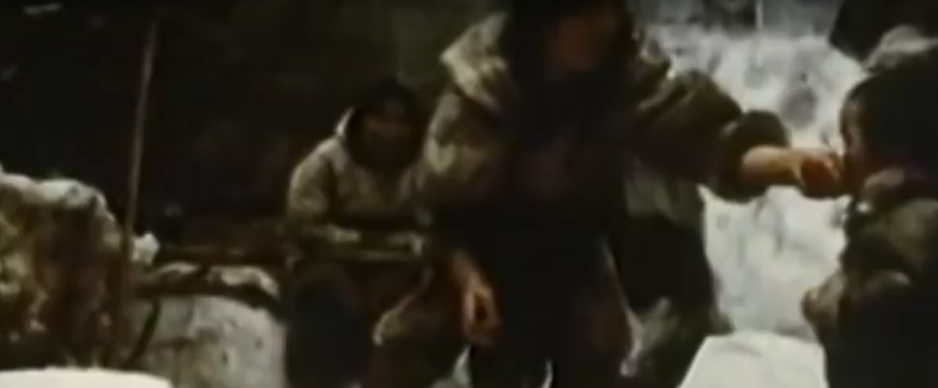 National Film Board of Canada (NFB), The Eskimo: Fight for Life (1970)
National Film Board of Canada (NFB), The Eskimo: Fight for Life (1970)
The Importance Of Marriage
Because of the harsh living conditions in the Arctic, people usually relied on having a partner to survive, leading marriage to be seen as a necessity rather than a choice. To that end, Inuit marriages were usually arranged at birth. While there were cases of love marriages, even these were usually arranged by the families of the betrothed.
 National Film Board of Canada (NFB), The Eskimo: Fight for Life (1970)
National Film Board of Canada (NFB), The Eskimo: Fight for Life (1970)
Inuit Marriage
Young women could get married anytime after puberty, but men had to wait until they could prove that they were skilled hunters who could support a family. While families might exchange gifts before a union, Inuit marriages were not celebrated with large ceremonies, and a couple was only truly considered married after they had their first baby.
 National Film Board of Canada (NFB), The Eskimo: Fight for Life (1970)
National Film Board of Canada (NFB), The Eskimo: Fight for Life (1970)
Inuit Marriage (cont'd)
For the most part, the Inuit were monogamous, but cases of open marriages and polygamy weren’t unheard of. However, it was very rare for men to have multiple wives because the scarcity of resources made it hard for a man to support more than one family.
 National Film Board of Canada (NFB), The Eskimo: Fight for Life (1970)
National Film Board of Canada (NFB), The Eskimo: Fight for Life (1970)
Was Divorce An Option?
Either party in a marriage could ask for a divorce, but this was usually seen as a bad thing since it was seen as a fracture not just in the family, but also the whole community. A common alternative to divorce would be to trade partners with a neighbor.
 National Film Board of Canada (NFB), The Eskimo: Fight for Life (1970)
National Film Board of Canada (NFB), The Eskimo: Fight for Life (1970)
Give And Take
Because resources were scarce and communities were small, the Inuit maintained a strong culture of borrowing and lending. If someone needed food or supplies, it was frowned upon to deny them aid without a good reason.
For example, if you had two pairs of boots and your neighbor needed one, it’s expected that you’d give him a pair. But if you only had one pair of boots for yourself, you could decline your neighbor’s plea for help.
 National Film Board of Canada (NFB), The Eskimo: Fight for Life (1970)
National Film Board of Canada (NFB), The Eskimo: Fight for Life (1970)
Inuit Homes
Inuit households were often made up of more than one family. It was not uncommon for people to live with their children and parents or siblings and adoptive relatives. All food and other resources were shared among the household and the community at large.
 National Film Board of Canada (NFB), The Eskimo: Fight for Life (1970)
National Film Board of Canada (NFB), The Eskimo: Fight for Life (1970)
Dark Traditions
For a long time, people believed that Inuit engaged in the practice of senicide—that is, killing the elderly. This theory doesn’t hold much weight considering that elders are usually the ones who pass on the oral history and communal knowledge of a tribe.
Babies, on the other hand, weren’t always so lucky.
 National Film Board of Canada (NFB), The Eskimo: Fight for Life (1970)
National Film Board of Canada (NFB), The Eskimo: Fight for Life (1970)
A Life And Death Decision
In cases of extreme cold and famine, an Inuit mother might make the heartbreaking choice to abandon her baby. This choice was not made lightly and sometimes the babies would be lucky enough to be found and taken in by another family.
Anthropologists also used to think that Inuit killed babies with birth defects, but the discovery of an ancient burial site changed that theory.
A Heartwarming Discovery
In the 1980s and early 90s, a storm caused massive erosion in some bluffs near Barrow, Alaska. This unearthed the remains of an ancient home and the frozen, mummified remains of a more than 800-year-old Inuit family.
One of the family members was Agnaiyaaq (or “Little Girl”), and her autopsy revealed that Inuit didn’t leave children with birth defects to die—on the contrary, they cared for them greatly.
 Universal History Archive, Getty Images
Universal History Archive, Getty Images
Agnaiyaaq
Based on the autopsies, Agnaiyaaq and her family died of starvation. But the autopsy also showed that Agnaiyaaq had been born with a genetic defect that prevented her from being able to walk.
Despite this, the state of her lungs suggests she spent her life near her mother and a cooking fire. She was also buried with care, dressed in a warm parka alongside a small toboggan made from whale bone.
 Library of Congress, Getty Images
Library of Congress, Getty Images
Inuit Spirituality
Traditionally, Inuit spirituality was a form of animism, in which all things were believed to have some kind of soul. Inuit shamans are called “angakkuq”, and they can be called on to entreat spirits for help or mediate disputes between community members.
The Angakkuq
While anyone could become an angakkuq, the mantle was usually taken up by men. Sometimes, an angakkuq might train his son to take on the shamanistic duties after him, while other times, a young person might exhibit powers in the form of dreams or with a prophecy, prompting them to be trained by the current angakkuq.
The Angakkuq
Unless the community was in need of spiritual help or mediation, the angakkuq lived like everyone else, contributing to the community via hunting or other work. Families could call on the angakkuq for their skills in divination and dream interpretation but some form of compensation was expected for these blessings.
Inuit Laws
The Inuit don’t really have a formal system of laws but there are three tenets that people must follow: irigusuusiit, meaning “things to avoid,” maligait, “meaning things to follow,” and piqujait, meaning things to do. Going against these tenets is thought to bring bad luck like unsuccessful hunts to the community.
Inuit Justice
To settle disputes, the angakkuq goes on a spirit journey to find what caused all the misfortune between the angry parties. Upon returning from his journey, the angakkuq would question the people involved with the dispute, and thinking that he already knew who was guilty, those being questioned would usually confess to their wrongdoings.
Inuit Justice (cont'd)
An admission of guilt was often seen as punishment enough for most offenses. If penance was required, the person might have to clean the clan’s urine pots or swap wives.
New Beliefs
While the angakkuq is still a part of many contemporary Inuit communities, they aren’t called on as much as they used to be in the past. Many Inuit have taken on Christian beliefs or have seen their spiritual traditions blended with Christian concepts.
Inuit Art
Carved items are a staple of Inuit art. Historically, they would carve things out of walrus and narwhal ivory, but nowadays, soft stone like soapstone and serpentinite are preferred mediums.
Inuit Art (cont'd)
Miniature sculptures of humans and animals were common motifs in Inuit art. Depictions of every activities like whaling, hunting, and camping, were popular in carvings on driftwood and bone.
Important Trade Goods
After the Inuit met European whalers, Inuit art and decorated tools became important trading commodities. Inuit bartered things like ivory miniatures, carvings of landscape scenes, and musical instruments in exchange for tea, alcohol, and weapons.
Inuit Prints
Since the 1950s, block printing has become a key medium in Inuit art. Around that time, the Canadian Government encouraged Inuit in settlements to use their art as a form of income. The need to mass produce art led to printmaking becoming more popular.
Inuit Prints (cont'd)
Rather than using linoleum or rubber, many Inuit artists use stones for their block prints. Historically, block printers were also skilled stone carvers, but nowadays the choice of stone mostly has to do with the easy availability of it. Wood is another common medium in block printing.
 General Photographic Agency, Getty images
General Photographic Agency, Getty images
Everyone Loves It
Today, Inuit art and textiles are popular throughout Canada. The country has also adopted certain Inuit icons as national symbols, like the inukshuk, which was displayed at the 2010 Winter Olympics in Vancouver. There are also several art galleries, like the Winnipeg Art Gallery, that are renowned for their collection of Inuit art.
Inuit Governance
Globally, Inuit are represented by the Inuit Circumpolar Council, which is non-governmental organization (NGO) recognized by the United Nations. Inuit Circumpolar Council promotes the rights and welfare of Inuit and other northern Indigenous people.
They often take a stand on environmental issues like climate change, as these issues disproportionally impact Inuit communities.
Inuit Governance (cont'd)
In Canada, Inuit have full governance over the territory of Nunavut. Nunavut used to be considered part of the Northwest Territories until April 1, 1999, when it became its own official jurisdiction. Today, it is Canada’s largest and northernmost territory.
Final Thoughts
Inuit life has changed a lot over the past century. Instead of dogsleds and harpoons, most now use snowmobiles and rifles. And rather than travel as nomads, settlements with opportunities for steady income have become the norm.
Yet there are some things that will never change, like the enduring culture and traditions of the Inuit. Thankfully, aspects of Inuit culture have not only seen a revival among Inuit communities but have also become vibrant parts of non-native society.
A Bad Name
The Inuit used to be called “Eskimos”, but this term is often considered offensive. It’s believed that the word "Eskimo" translates to something like “the eaters of raw fish”, which was used in a pejorative manner to distinguish Inuit from other native tribes in Canada.
 J. J. O'Neill, CC BY-SA 4.0, Wikimedia Commons
J. J. O'Neill, CC BY-SA 4.0, Wikimedia Commons

